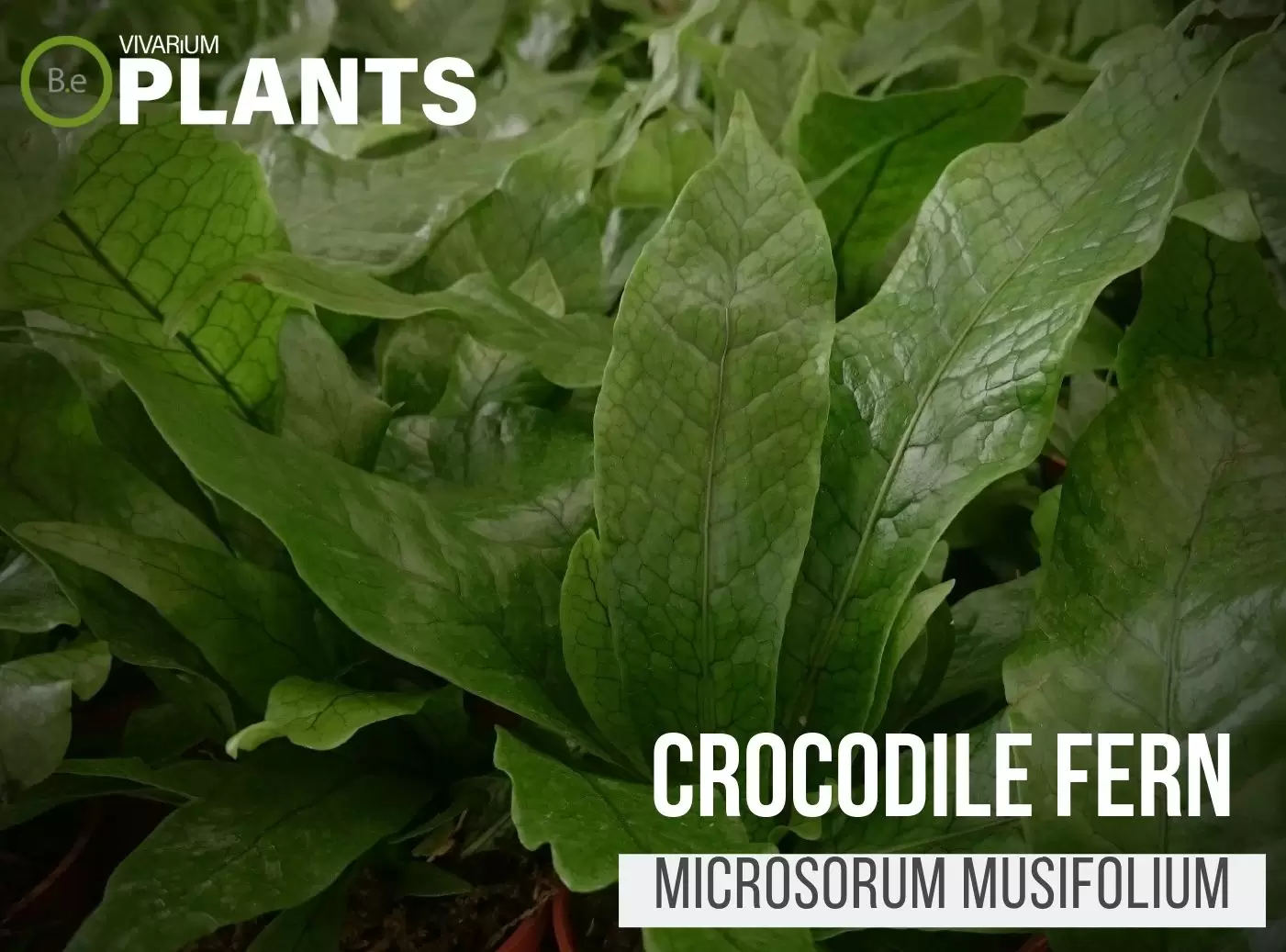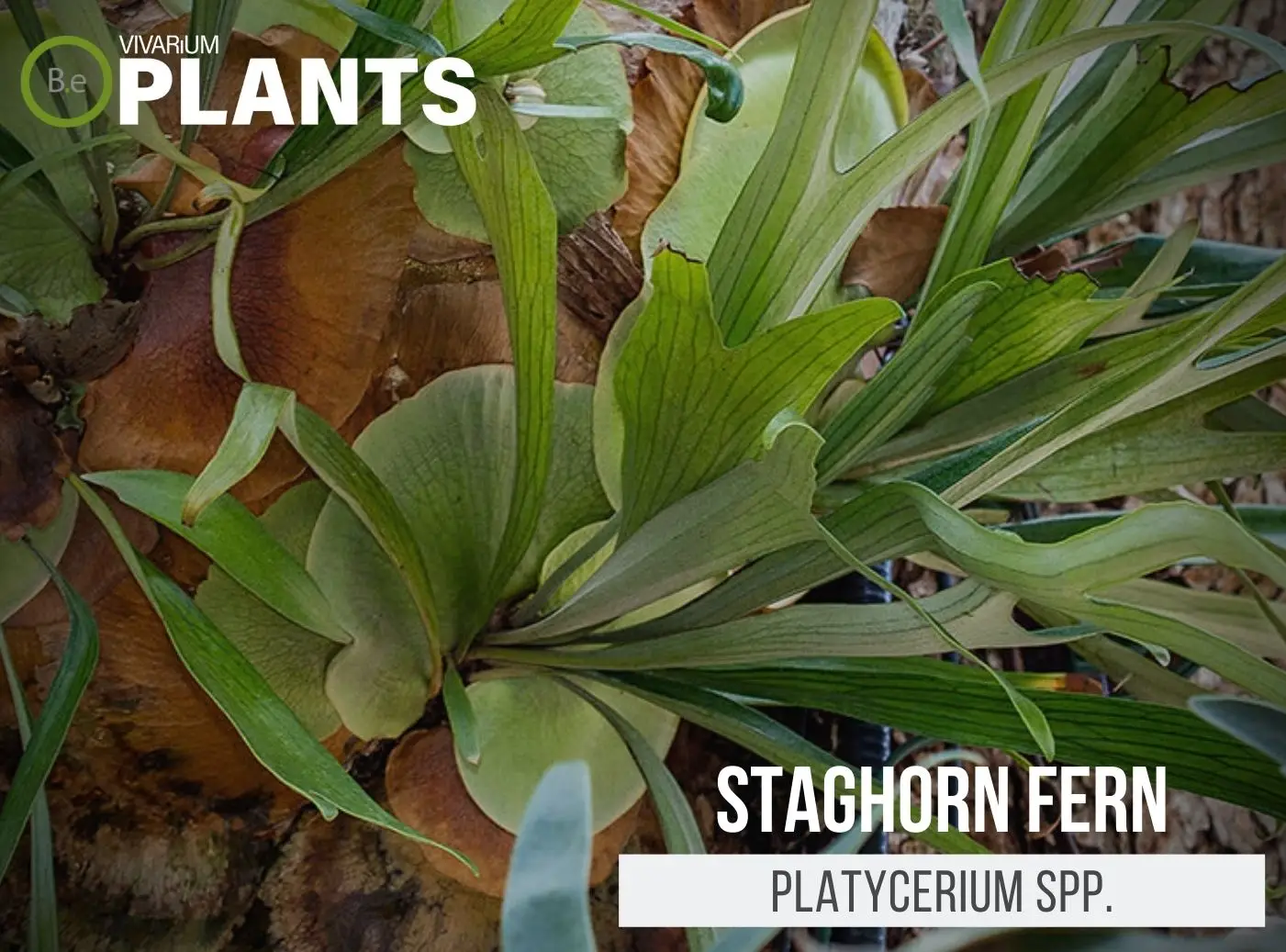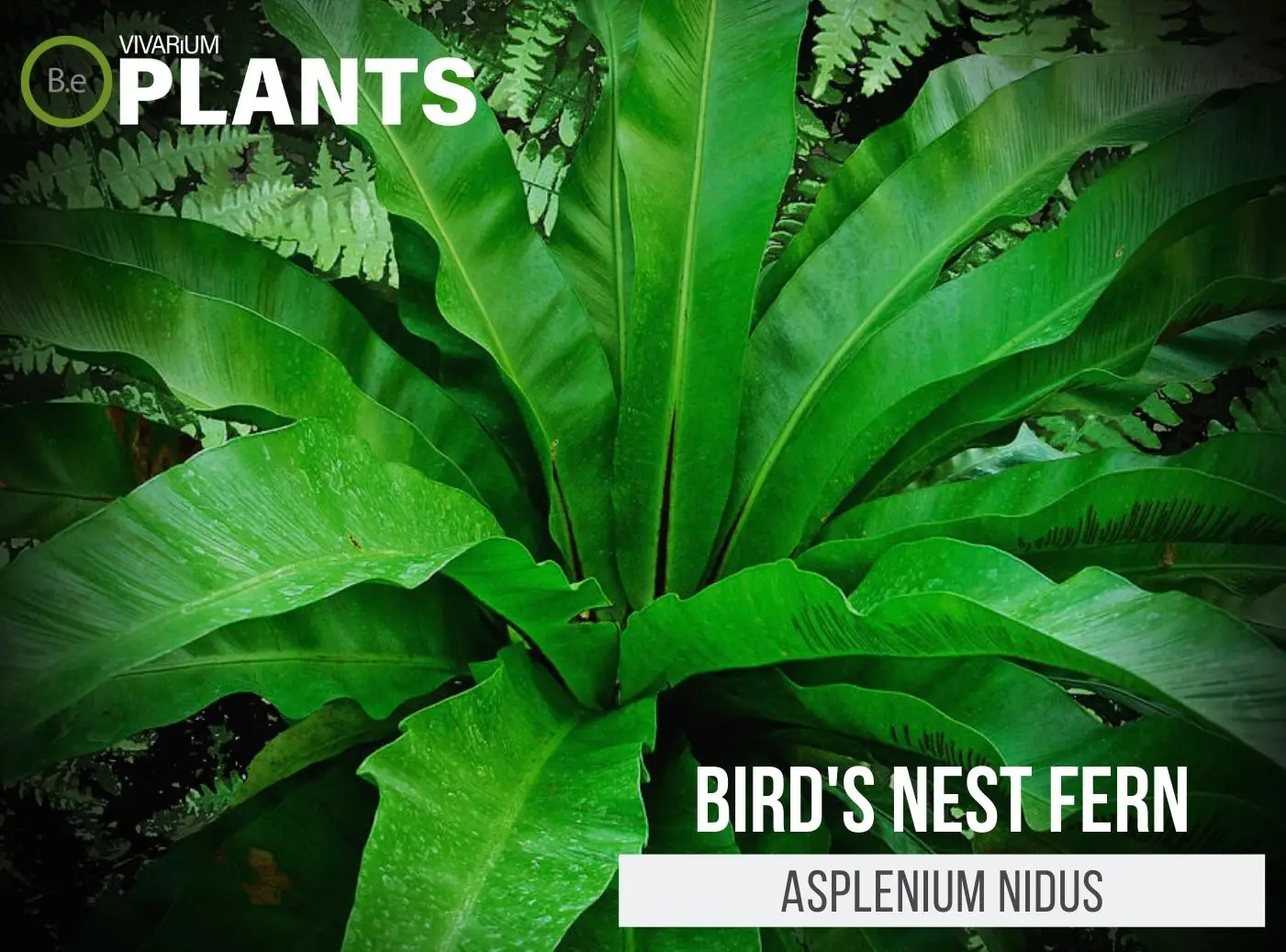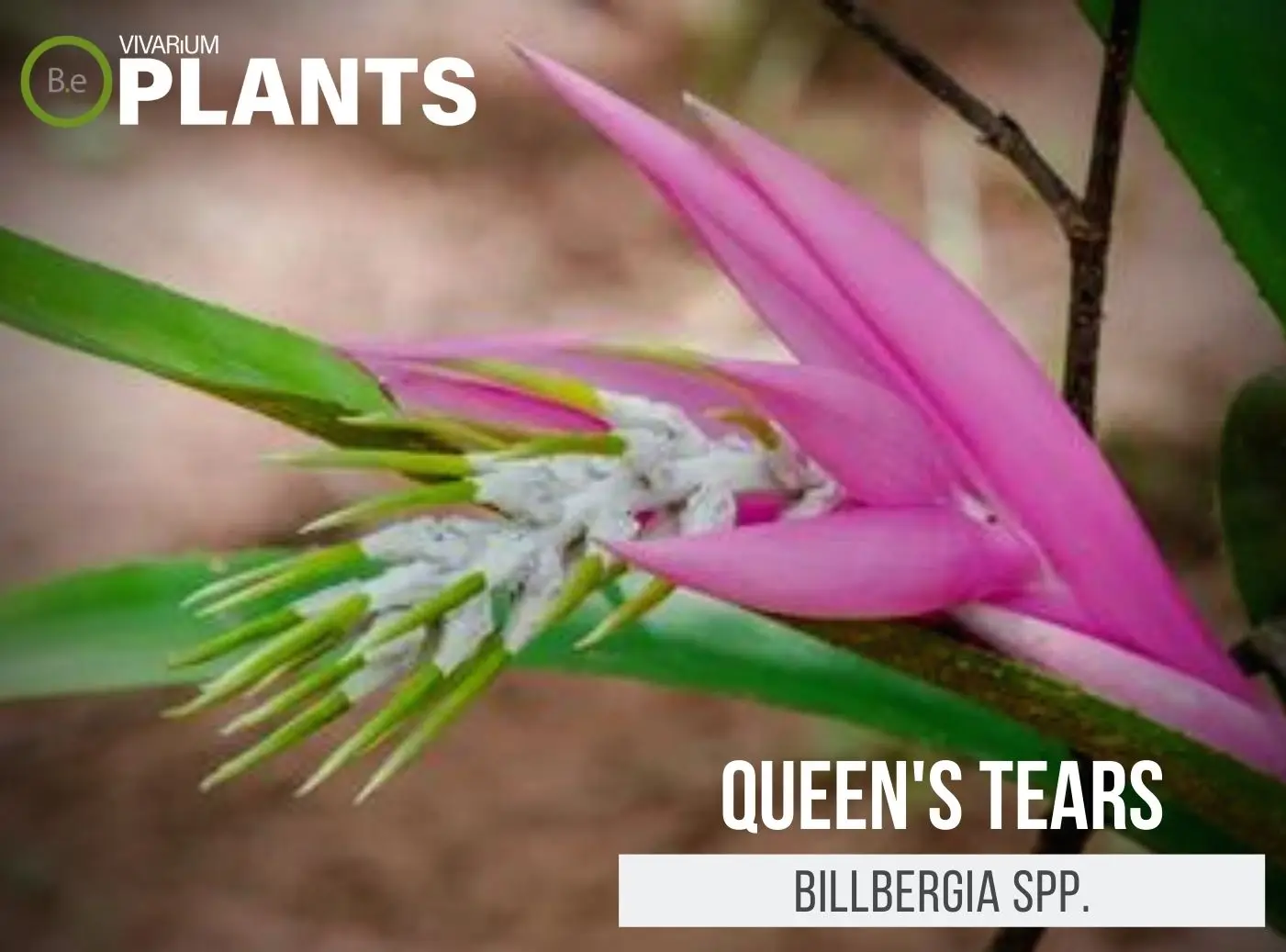Welcome, today I want to give valuable insight into large terrarium plants! Whether you’re a beginner or an experienced gardener, these plants can be a great addition to mega vivariums that need filler plants that are capable of spreading out far and wide.
Not only do they look great, but they also offer a variety of benefits to your enclosure. From improving air quality to adding a unique aesthetic to your terrarium, large terrarium plants come in a variety of shapes, sizes, and colors to fit any home.
In this article, we’ll discuss the benefits of large terrarium plants, the different types available, and how to care for them. So, let’s get started!
Table Of Contents:
ToggleBenefits Of Using Large Terrarium Plants
One of the greatest benefits of large terrarium plants is that they can improve the air quality of your terrarium. Plants help to purify the air by absorbing carbon dioxide and releasing oxygen.
This can help to reduce energy costs. Not only that, but these plants can also add a unique aesthetic to your terrarium.
They come in a variety of shapes, sizes, and colors and can be used to create a mini habitat for animals. Large terrarium plants can also help to make your terrarium feel safe and more comfortable for its inhabitants.
They provide a place for your animals to hide and explore, and they can also add a unique element of texture and depth to your terrarium. Plus, large terrarium plants can also be used to create a beautiful and vibrant display that can last for years.


Best Types Of Large Terrarium Plants
When selecting ferns suitable for large terrariums, be sure to look for slow–growing species that are tolerant of low humidity and need minimal maintenance. Be sure to look for plants that will provide your terrarium with the optimal level of humidity, light, and size.
Crocodile Fern (Microsorum musifolium ‘crocodyllus’)
Microsorum musifolium ‘crocodyllus’ is a beautiful, large terrarium fern with a unique look. It features thick, leathery, dark green fronds and can grow up to 1 meter in length.
Because of its slow–growing nature and its tolerance for low humidity, it is perfect for terrariums and vivariums. What makes Crocodile Fern unique is its coloring.
The fronds have a reddish–purple hue, making it a beautiful and vibrant addition to any terrarium.
Here’s a complete guide on caring for the Crocodile Fern (Microsorum musifolium ‘crocodyllus’).
Staghorn Fern (Platycerium spp.)
Platycerium spp. is a unique and eye–catching large terrarium plant. It is actually an epiphyte, meaning that it grows on other plants or trees rather than on soil, and it has a unique antler–like shape.
There are two types of leaves – bigger, brown leaves that protect the growing fronds, and smaller, green ones that absorb light. The fronds that hang down from the “antlers“ which give the fern its distinctive name.
It is an amazing plant to grow in a terrarium as it requires no soil and gets its nutrients from the bark of the plant or tree. This makes it a low-maintenance plant and very suitable for indoor growing.
Here’s a complete guide on caring for the Staghorn Fern (Platycerium spp.).
Bird’s Nest Fern (Asplenium nidus)
The Bird‘s Nest Fern is an intriguing large fern plant that is native to tropical and subtropical regions. It has an oval shape formed of long, wavy, dark green fronds that are often 20 to 40 inches long and 12 to 20 inches wide.
The unique aspect of this plant is its “nest” – a forming of a large rosette at the center of the plant. Bird‘s Nest Ferns require humid environments, making them a perfect fit for large terrariums.
They require bright, indirect light and moist, yet well–drained soil, and can grow to be up to four feet tall. With its thick, lush foliage and its ability to thrive in a small, damp environment, the Bird‘s Nest Fern is an ideal choice for any large terrarium.
Here’s a complete guide on caring for the Bird’s Nest Fern (Asplenium nidus).
Philodendron Brasil (Philodendron hederaceum)
Philodendron hederaceum is a large and very unique vine plant that is sure to make an attractive addition to your terrarium. It has deep green leaves with dramatic, golden–yellow shapes through their centers, a stark contrast that looks very eye–catching.
The leaves grow in a slow climbing pattern, making it ideal for terrariums with a tall, narrow shape. As it‘s a fast grower, it benefits from regular watering and fertilization to keep it healthy.
What makes this plant truly stand out among other large terrarium plants is its natural air–purifying qualities; this tropical plant can remove toxins from the air, making it a great choice for improving air quality in any living space.
Here’s a complete guide on caring for the Philodendron Brasil (Philodendron hederaceum).
King of Air Plants (Tillandsia xerographica)
Tillandsia xerographica commonly referred to as “the king of air plants” is a highly unique and attractive large Tillandsia.
Also known as “the queen of the air plants,” it requires no soil for growth and has incredibly long and curly silver–gray foliage that radiates from the center of the plant. This plant grows slowly and is drought-tolerant, which makes it an ideal plant for larger terrariums.
It is also a certified air purifier and releases oxygen into the air, making it the perfect addition to any indoor space.
The King of Air Plants stands out amongst other terrarium plants because of its ability to absorb moisture and nutrients through its leaves, meaning minimal maintenance is required.
Here’s a complete guide on caring for the King of Air Plants (Tillandsia xerographica).
Queen’s Tears (Billbergia spp.)
Billbergia spp. is a popular large bromeliad, known for its long, pale green leaves and delicate white and pink flowers. It is a member of the pineapple family and can reach up to two to three feet in height when grown indoors.
It prefers to stay moist in an environment that ranges from humid to slightly dry and requires bright indirect light, making it the perfect fit for terrariums.
What makes Queen‘s Tears unique from other large terrarium plants is that the pink and white flowers, which look like tiny droplets, give the impression of tears, thus the name.
Here’s a complete guide on caring for the Queen’s Tears (Billbergia spp.).
Dumb Cane (Dieffenbachia spp.)
Dieffenbachia spp. is one of the most popular large terrarium plants available. It is a low–maintenance plant with large, glossy leaves and bright splashes of yellow, cream, and white to brighten up any terrarium.
Its unique feature is its sap – when touched, it can cause temporary numbness in the tongue, giving it its name.
This feature helps make it an exciting addition to any terrarium, as it is an easy–to–care–for plant that provides a bit of danger!
Here’s a complete guide on caring for the Dumb Cane (Dieffenbachia spp.)
Peace Lily (Spathiphyllum spp.)
The Peace Lily is a large and lush evergreen plant that makes a stunning addition to any terrarium. It boasts lush, dark green leaves and small, white flowers that appear in the summer.
Additionally, this tropical plant is incredibly low–maintenance and requires very little bright light, soil, and water to remain healthy.
What sets this plant apart from other terrarium plants is its ability to potentially purify the air inside your terrarium by breaking down and neutralizing potentially harmful household toxins.
Here’s a complete guide on caring for the Peace Lily (Spathiphyllum spp.).
Prayer Plant (Maranta leuconeura)
The prayer plant is a tropical terrarium plant that is known for its eye–catching foliage. This beautiful and unique plant has broad, oval–shaped leaves with dark green and yellow–green stripes running along them.
Prayer Plant is not only perfect as a terrarium specimen, but its unique feature is that its leaves fold up during the nighttime in a way that looks like hands joined in prayer giving it its nickname.
This feature is not typical of other large terrarium plants, making it a truly noteworthy pick for plant lovers.
Here’s a complete guide on caring for the Prayer Plant (Maranta leuconeura).
Crown of Thorns (Euphorbia milii)
The Crown of Thorns is a cactus plant that makes an excellent addition to any large terrarium environment. It has glossy green leaves and produces small yellow flowers in the spring, surrounded by bracts that could be either yellow or purple in color.
Its unique feature is its thorns, which form a halo around the flower buds and gives the plant a crown–like appearance, hence its name “Crown of Thorns“. Its bright, vibrant colors make this plant very attractive and it can grow up to two feet tall.
Due to its easy care requirements, the Crown of Thorns is an ideal large terrarium plant for anyone looking to add color and texture to their terrariums.
Here’s a complete guide on caring for the Crown of Thorns (Euphorbia milii).
Caring For Large Terrarium Plants
Caring for large terrarium plants is relatively easy, but there are a few key things to keep in mind. First and foremost, it’s important to ensure that the plants receive adequate lighting.
Most large terrarium plants need at least 6-8 hours of indirect sunlight every day to thrive. Additionally, these plants need to be watered regularly. Water the plants when the substrate is dry to the touch, but be careful not to overwater them as this can lead to root rot.
Regular fertilization is also important to ensure that your plants get all the necessary nutrients. Lastly, it’s important to keep an eye out for pests and diseases.
If you notice any signs of pests or disease, it’s important to take action immediately to prevent the spread of the problem.


Common Issues With Large Terrarium Plants
Large terrarium plants can be quite hardy, but there are still some common issues you may encounter. For example, some plants may not be able to survive in a terrarium due to their humid environment.
If you notice that your plants are wilting or yellowing, it may be a sign that they’re not getting enough air or light. Furthermore, make sure to watch out for pests like mealybugs and spider mites, which can quickly infest a terrarium.
Finally, if you’ve recently added a new plant to your terrarium, be sure to keep an eye out for signs of stress, such as drooping leaves or discoloration.


In Summary
We hope this article has given you a better understanding of the benefits and importance of large terrarium plants. With the right care and maintenance, these plants can truly transform any home.
Whether you want to add a unique aesthetic to your terrarium or create a mini habitat for animals, large terrarium plants are a great option. So, go ahead, pick out your favorite XL terrarium plants, and get to sprucing up your terrarium!
Frequently Asked Questions
Here’s a quick list of the best types of large terrarium plants:
-
Crocodile Fern (Microsorum musifolium ‘crocodyllus’)
-
Staghorn Fern (Platycerium spp.)
-
Bird’s Nest Fern (Asplenium nidus)
-
Philodendron Brasil (Philodendron hederaceum)
-
King of Air Plants (Tillandsia xerographica)
-
Queen’s Tears (Billbergia spp.)
-
Dumb Cane (Dieffenbachia spp.)
-
Peace Lily (Spathiphyllum spp.)
-
Prayer Plant (Maranta leuconeura)
-
Crown of Thorns (Euphorbia milii)
Different types of plants that can be grown in a large terrarium include ferns, succulents, mosses, air plants, and climbing vines.
A large terrarium is usually referred to as a vivarium.
No, not all terrariums have bugs. Some terrariums feature only plants and soil, while others can contain a variety of animals and insects.












